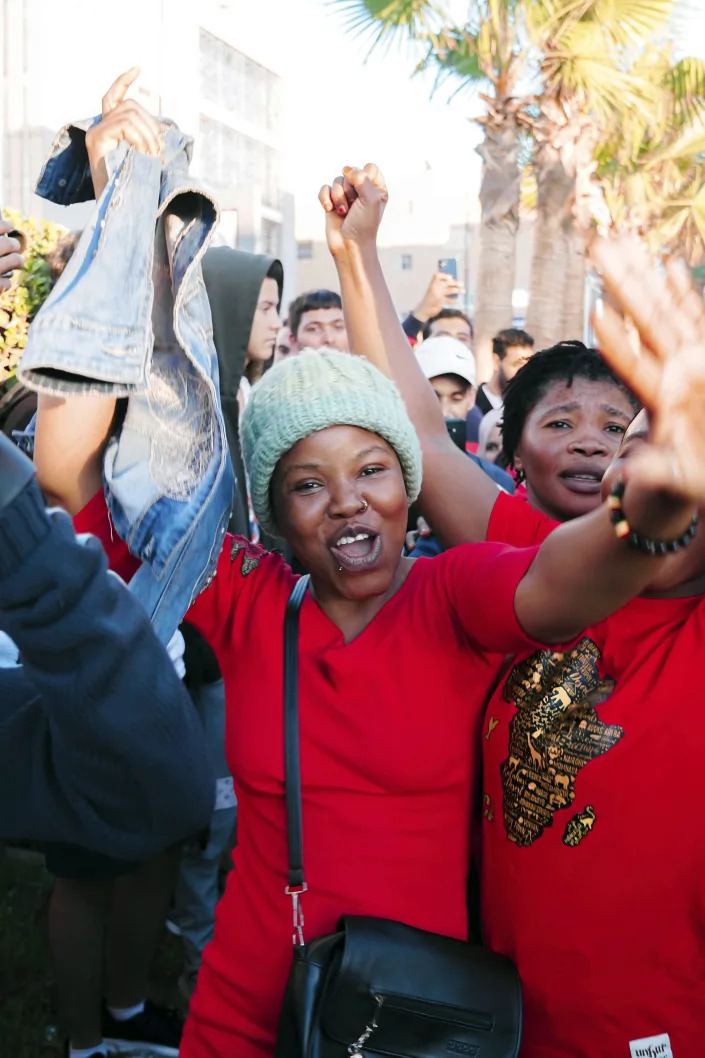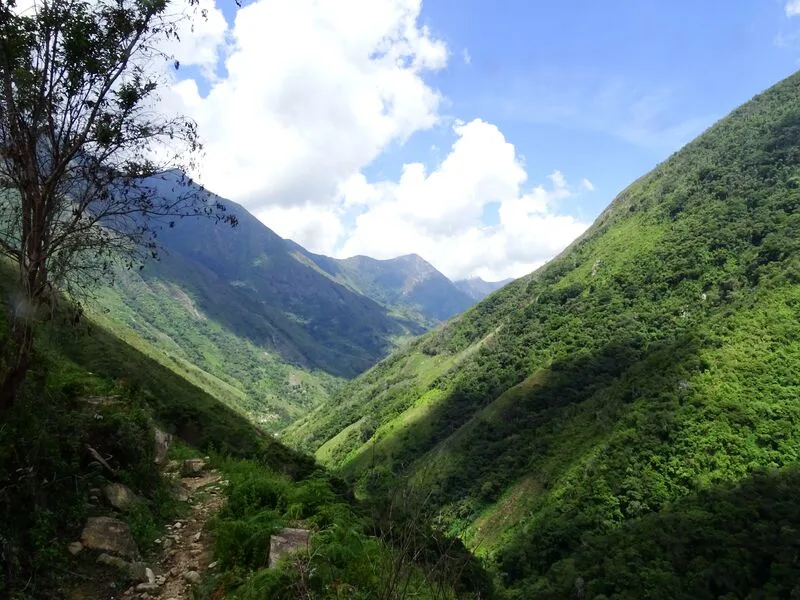Morocco World Cup wins stir mixed feelings in Western Sahara






A woman wearing a Sahrawis traditional outfit celebrates Morocco's World Cup victory against Portugal in the Morocco-administered Western Sahara city of Laayoune, Saturday, Dec. 10, 2022.
Wed, December 14, 2022
LAAYOUNE, Western Sahara (AP) After the final whistle of every match Morocco won in its history-making World Cup run, crowds poured out of homes and cafes in the biggest city of Western Sahara, celebrating for hours.
The revelers included some Sahrawi people, members of an ethnic group that has sought independence for Western Sahara since Morocco annexed the disputed territory in 1975. Other Sahrawis rooted for Morocco's defeat on the soccer field or refused to take part in the celebrations.
They accuse Moroccan authorities of increasingly cracking down on independence activists, and of touting the World Cup team's success in Qatar to distract the population from economic challenges.
But the presence of some Sahrawi fans cheering for Morocco in the streets of Laayoune illustrates the unifying power of the first Arab or African team to advance so far in the world's biggest sporting event. Morocco's national team, known as the Atlas Lions, faces defending champion France in Wednesday's semifinal.
Al-Salik Al-Yazid, a young Sahrawi in Laayoune, said ''the historic success of the Moroccan national team'' has created a collective feeling of ''overwhelming joy that included all Arabs and Africans, despite the constant discontent with the Moroccan state.''
He called it a sign of gradually shifting mindsets among younger Sahrawis who grew up under Moroccan rule and under a 1991 cease-fire that ended a 16-year conflict between Moroccan forces and Algeria-backed Polisario Front independence fighters.
''With the growth of generations merging and coexisting in one common environment, it has become natural to find Sahrawi individuals celebrating the victory of the Moroccan national team,'' Al-Yazid said. ''Many Sahrawis have overcome the problem of identity caused by decades of political struggle.''
However, a long-promised referendum on the territory's future never took place. Low-intensity hostilities have reignited, leaving the truce at risk of unraveling in Morocco-controlled Western Sahara.
Sahrawi people make up a minority of the estimated population of 350,000 in the territory, a Colorado-sized region rich in phosphates and fishing grounds. The rest, following nearly a half-century of resettlement efforts are mainly Moroccans. Other Sahrawis live in the sliver of Western Sahara ruled by the Polisario, or in refugee camps in Algeria.
On World Cup game nights, the atmosphere is festive but complex.
In past tournaments, Sahrawis generally supported the Algerian team. Activists accused Moroccan police of violently suppressing celebrations of Algerian victories. Algeria didn't qualify for this year's World Cup.
When Morocco played Spain last week, some Sahrawis welcomed Morocco's win and others wore T-shirts supporting Spain, the Western Sahara's former colonial ruler. Some threw stones at people celebrating the Moroccan victory.
Mohamed El-Yousefi, a Moroccan resident of Laayoune, said he understands the resentment, calling it ''closely linked to the conflict in the desert.''
Some Sahrawi people, he said, rejoice in good faith, and others ''hate everything that comes from Morocco.''
''Happy Moroccans also sometimes fall into the trap of politics and chant phrases such as `We won out of spite against the enemy' in reference to Sahrawis who are dissatisfied with Morocco's victory,'' El-Yousefi said.
Sahrawi independence activists say it's not possible to separate the Moroccan team from the Kingdom of Morocco itself.
The team represents the Royal Football League and by extension the monarchy, ''which for us is the cause of the tragedy of our people through its forceful occupation of Western Sahara,'' said Mubarak Mamine, a Laayoune-based Polisario Front activist.
''Football is a tool used by the Moroccan regime to divert the attention of the Moroccan people from their basic issues, especially in light of the deteriorating economic and social conditions in the country,'' Marmine said.
Morocco denies there is an armed conflict in what it calls its ''southern provinces,'' and has grown increasingly assertive in defending its claim over the Western Sahara in recent years.
The kingdom received a major boost - and independence activists suffered a major blow - when the United States in 2020 recognized Morocco's sovereignty over the territory in exchange for Morocco normalizing ties with Israel.
Morocco's climb up the World Cup ladder has taken fans everywhere by surprise, including in Western Sahara.
Sports journalist Balfater Abdel-Wahhab said the celebrations he covered in Laayoune were unlike any the city had seen.
''All the masses in the city of Laayoune came out'' as Morocco beat rival after rival to make it to the semifinal. He called it a ''wonderful celebration of sportsmanship, decorated with national (Moroccan) flags and traditional (Sahrawi) desert costumes.''
AP World Cup coverage: https://apnews.com/hub/world-cup and https://twitter.com/AP-Sports














